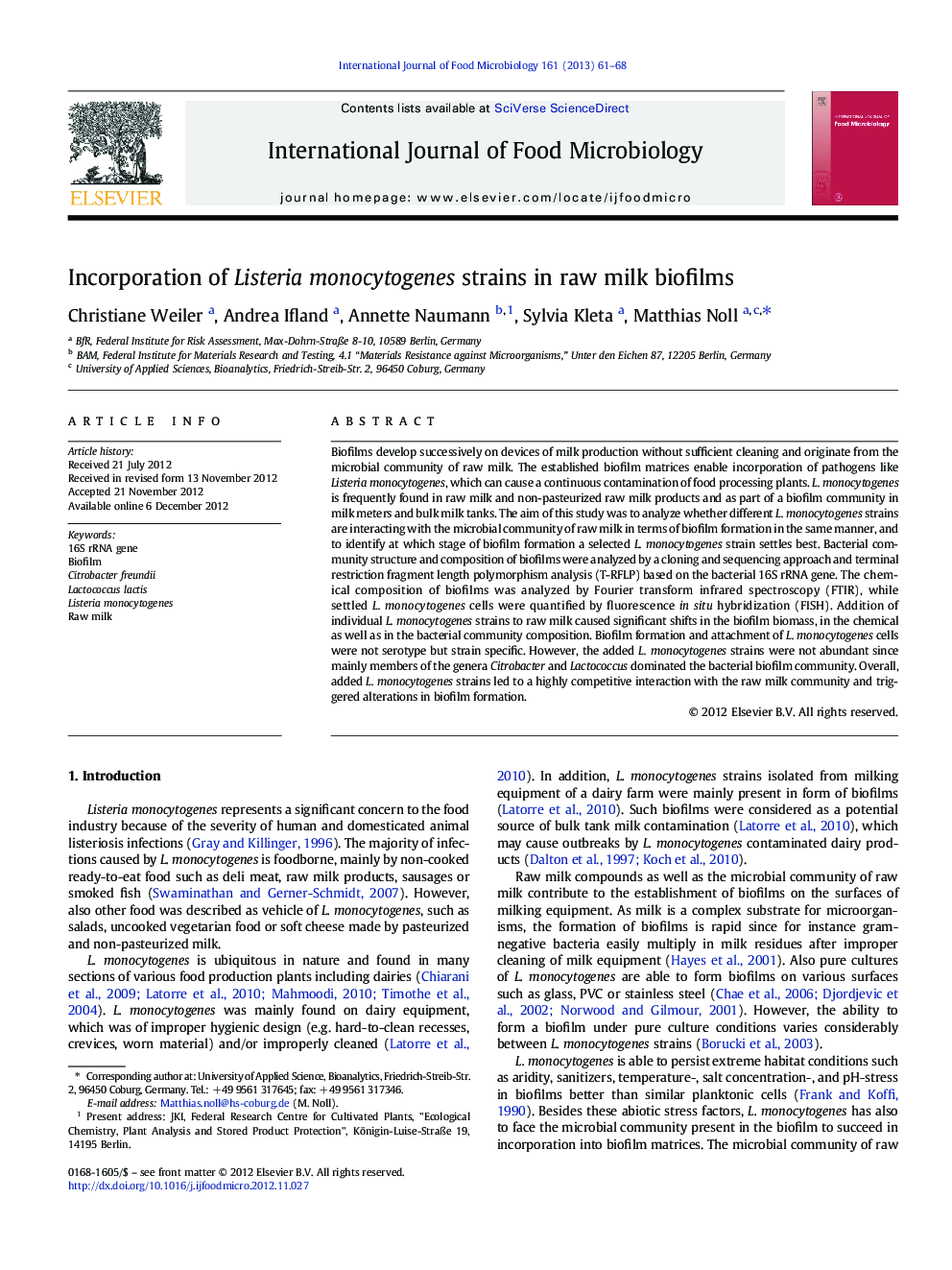| Article ID | Journal | Published Year | Pages | File Type |
|---|---|---|---|---|
| 4367218 | International Journal of Food Microbiology | 2013 | 8 Pages |
Biofilms develop successively on devices of milk production without sufficient cleaning and originate from the microbial community of raw milk. The established biofilm matrices enable incorporation of pathogens like Listeria monocytogenes, which can cause a continuous contamination of food processing plants. L. monocytogenes is frequently found in raw milk and non-pasteurized raw milk products and as part of a biofilm community in milk meters and bulk milk tanks. The aim of this study was to analyze whether different L. monocytogenes strains are interacting with the microbial community of raw milk in terms of biofilm formation in the same manner, and to identify at which stage of biofilm formation a selected L. monocytogenes strain settles best. Bacterial community structure and composition of biofilms were analyzed by a cloning and sequencing approach and terminal restriction fragment length polymorphism analysis (T-RFLP) based on the bacterial 16S rRNA gene. The chemical composition of biofilms was analyzed by Fourier transform infrared spectroscopy (FTIR), while settled L. monocytogenes cells were quantified by fluorescence in situ hybridization (FISH). Addition of individual L. monocytogenes strains to raw milk caused significant shifts in the biofilm biomass, in the chemical as well as in the bacterial community composition. Biofilm formation and attachment of L. monocytogenes cells were not serotype but strain specific. However, the added L. monocytogenes strains were not abundant since mainly members of the genera Citrobacter and Lactococcus dominated the bacterial biofilm community. Overall, added L. monocytogenes strains led to a highly competitive interaction with the raw milk community and triggered alterations in biofilm formation.
► Interaction of 12 Listeria monocytogenes strains with raw milk. ► Interaction caused shifts in the formation of biofilms and structural changes. ► Composition of biofilms was altered strain specific rather than serotypic specific. ► Members of the genera Citrobacter and Lactococcus dominated the raw milk biofilms. ► Many-sided experimental approach was applied by e.g. T-RFLP, FISH, FTIR-ATR.
